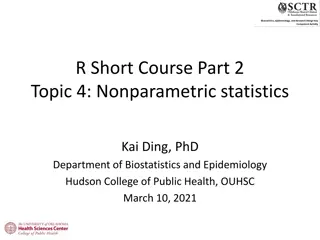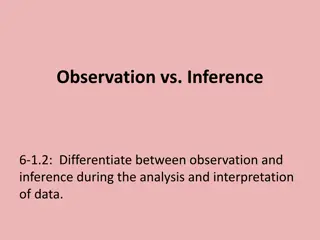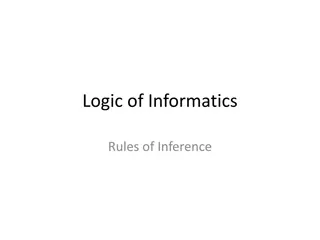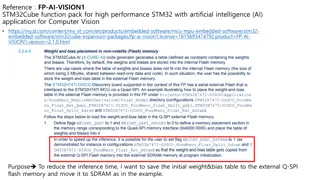Understanding Inference for Experiments in Statistics
Learn about inference for experiments in statistics, including completely randomized design, statistical significance, and random assignment to treatments. Discover how to analyze results, determine significance, and interpret differences in responses. Explore the concept through practical applications and examples. Gain insights into making firm conclusions based on experimental outcomes.
Download Presentation

Please find below an Image/Link to download the presentation.
The content on the website is provided AS IS for your information and personal use only. It may not be sold, licensed, or shared on other websites without obtaining consent from the author. Download presentation by click this link. If you encounter any issues during the download, it is possible that the publisher has removed the file from their server.
E N D
Presentation Transcript
Collecting Data Lesson 3.8 Inference for Experiments Statistics and Probability with Applications, 3rdEdition Starnes & Tabor Bedford Freeman Worth Publishers
Inference for Experiments Learning Targets After this lesson, you should be able to: Outline an experiment that uses a completely randomized design. Explain the concept of statistical significance in the context of an experiment. Use simulation to determine if the difference between two means or two proportions in an experiment is significant. Statistics and Probability with Applications, 3rdEdition 2 2
Inference for Experiments In the previous two lessons, you learned how to properly design an experiment. In this lesson, you will learn how to outline a completely randomized experiment and how to analyze the results of an experiment that compares two treatments. Completely Randomized Design In a completely randomized design, the experimental units are assigned to the treatments completely by chance. Statistics and Probability with Applications, 3rdEdition 3 3
Inference for Experiments Random assignment to treatments is absolutely essential in any experiment. There is no requirement that treatment groups be exactly the same size, although there are some statistical advantages if they are roughly equal in size. Statistics and Probability with Applications, 3rd Edition 4 4
Inference for Experiments Before making any firm conclusions, we must account for the possible differences in response that could occur due only to the random assignment of treatments. That is, we must make sure that the difference in response for the groups in an experiment is larger than what we would expect to occur simply due to chance variation in the random assignment. If this is true, the results of the experiment are statistically significant. Statistically Significant When an observed difference in responses between the groups in an experiment is too large to be explained by chance variation in the random assignment, we say that the result is statistically significant. Statistics and Probability with Applications, 3rd Edition 5 5
Inference for Experiments The researchers in this study determined that the difference of 4.14 was statistically significant. In other words, a difference in mean improvement of 4.14 was too large to occur simply due to chance variability in the random assignment. Statistics and Probability with Applications, 3rd Edition 6 6
Inference for Experiments We can use simulation to determine if the difference in two statistics is significant. We used the One Quantitative Variable applet to do 100 trials of the simulation described in the activity. The dotplot shows that getting a difference of 1.2 isn t that unusual. In 19 of the 100 trials, we obtained a difference of 1.2 or more simply due to chance variation in the random assignment. Because the difference of 1.2 or greater is somewhat likely to occur by chance alone, the results of Mr. Luckow sclass experiment aren t statistically significant. Statistics and Probability with Applications, 3rd Edition 7 7
LESSON APP 3.8 Does fish oil affect blood pressure? To see if fish oil can help reduce blood pressure, males with high blood pressure were recruited and randomly assigned to different treatments. Seven of the men were randomly assigned to a 4-week diet that included fish oil. Seven other men were assigned to a 4-week diet that included a mixture of oils that approximated the types of fat in a typical diet. At the end of the 4 weeks, each volunteer s blood pressure was measured again and the reduction in diastolic blood pressure was recorded. These reductions are shown in the table. Note that a negative value means that the subject s blood pressure increased. Statistics and Probability with Applications, 3rd Edition 8 8
LESSON APP 3.8 Does fish oil affect blood pressure? 1. Outline a completely randomized design for this experiment. 2. Calculate the mean reduction for each group and the difference in mean reduction (Fish oil Mixture). 3. One hundred trials of a simulation were performed to see what differences in means are likely to occur due only to chance variation in the random assignment, assuming that the type of oil doesn t matter. Use the results of the simulation below to determine if the difference in means from Question 2 is statistically significant. Explain your reasoning. Statistics and Probability with Applications, 3rd Edition 9 9
Inference for Experiments Learning Targets After this lesson, you should be able to: Outline an experiment that uses a completely randomized design. Explain the concept of statistical significance in the context of an experiment. Use simulation to determine if the difference between two means or two proportions in an experiment is significant. Statistics and Probability with Applications, 3rd Edition 10 10























